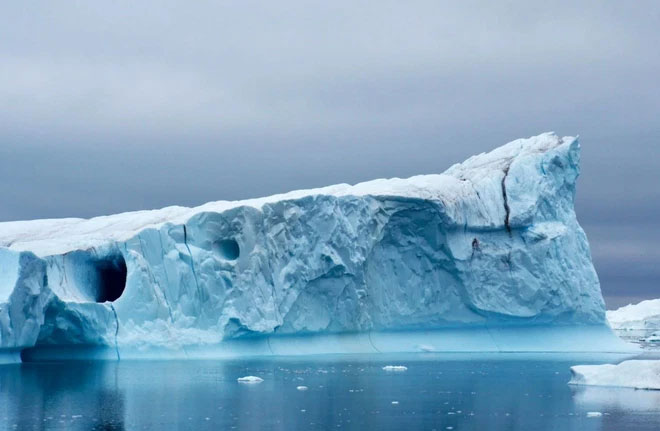Greenland's huge freshwater reserve is losing 357 billion tons of ice every year
It should come as no surprise that polar ice melt is being exacerbated by global warming. But so far we don't have the most accurate rough estimate of how much ice is melting in one of the Earth's largest ice reserves, Greenland .

The amount of ice melting in Greenland is a huge number.
According to a new study published in the journal Nature Communications recently, the amount of ice melting in Greenland is a huge number.
The study, carried out by scientists at the University of Leeds, UK, used data from the European Space Agency's CryoSat-2 satellite to estimate how much ice has melted over the past decade due to climate change. .
Dr. Thomas Slater said: "As we have seen with other regions of the world, Greenland is also vulnerable to an increase in extreme weather events. As the climate warms, melting occurs ice in Greenland will occur more frequently. Such observations are an important step in helping us improve climate models and better predict what will happen this century."
The study found that the amount of ice melting has increased 21% since 2011, equivalent to about 357 billion tons of ice melting each year in Greenland.
Dr Slater remains hopeful that ambitious anthropogenic emissions reduction targets can cut Greenland's ice loss and meltdown by three times, and of course we still have time to achieve it. this target.

Ice in Greenland will contribute between 3 and 23cm to global sea level rise by 2100.
Study co-author Dr. Amber Leeson said: "Modelling estimates suggest that the Greenland ice sheet will contribute between 3 and 23cm to global sea level rise by 2100. The range is quite wide, in part due to the uncertainty involved in simulating complex ice melt processes, including extreme weather. more about complex ice melt processes, improving modeling capabilities and thus allowing us to adjust estimates of future sea level rise".
By combining real-time satellite observations with complex climate models, researchers like Dr. Leeson and Slater hope scientists can refine predictions accordingly. to prevent future environmental disasters.
- Huge fresh water is discovered deep below the sea floor
- Use land to reduce greenhouse gas emissions
- Hydroelectricity discharges one billion tons of CO2 into the atmosphere every year
- The world wastes 1.3 billion tons of food every year
- Losing $ 1 billion because of Xbox, Microsoft still has a big profit
- Discover huge reserves of rare earth in Afghanistan
- Global carbon emissions are about to reach 36 billion tons
- The US discovered Urani mine more than 90 thousand tons worth 14.5 billion USD
- Brazil finds the world's largest source of freshwater
- Many species of seafood in Nha Trang Bay are exhausted
- Sundarbans Reserve
- Antarctic ice disappeared 2700 billion tons during the last 25 years
 Is the magnetic North Pole shift dangerous to humanity?
Is the magnetic North Pole shift dangerous to humanity? Washington legalizes the recycling of human bodies into fertilizer
Washington legalizes the recycling of human bodies into fertilizer Lightning stone - the mysterious guest
Lightning stone - the mysterious guest Stunned by the mysterious sunset, strange appearance
Stunned by the mysterious sunset, strange appearance